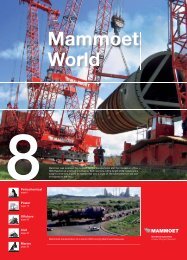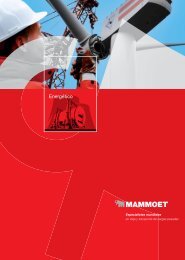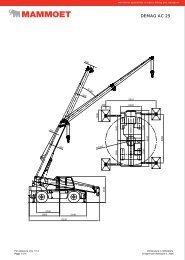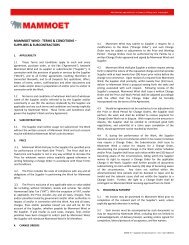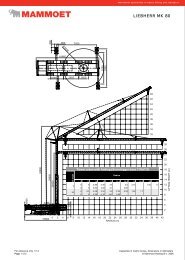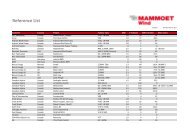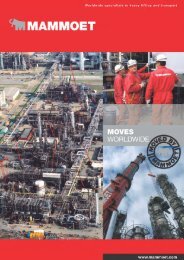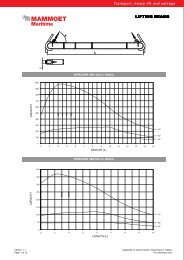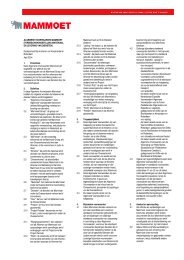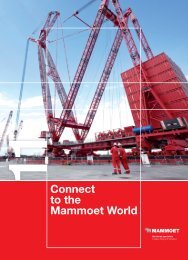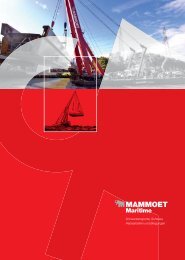You also want an ePaper? Increase the reach of your titles
YUMPU automatically turns print PDFs into web optimized ePapers that Google loves.
<strong>PTC</strong> <strong>Heavy</strong> <strong>Lifting</strong> <strong>Barge</strong><br />
<strong>Heavy</strong> lifting for marine projects<br />
<strong>Heavy</strong> lifting operations for harbor and offshore projects are usually carried out using either sheerlegs or<br />
fl oating cranes. Sheerlegs have the advantage of a greater lifting capacity, while fl oating cranes can<br />
revolve (slew) which gives much greater operational fl exibility.<br />
Flexibility<br />
Mammoet has developed its <strong>PTC</strong> cranes over 15 years and used them for 17,000 heavy lifts. We have<br />
now installed one of these <strong>PTC</strong>s on a large barge. The key advantage of our design is that the <strong>PTC</strong> can<br />
operate either with the boom fi xed in sheerlegs mode, for the highest lifting capacity, or in revolving<br />
mode, for much greater fl exibility when picking up and placing the load. The barge has a relatively<br />
shallow draught and can therefore operate close to the shore, even in harbors which have not been fully<br />
dredged.<br />
This multifunctional design can bring great time-savings when constructing large jetties, other harbor<br />
works and offshore structures. The <strong>PTC</strong> on a barge has many advantages over large sheerlegs, fl oating<br />
cranes and jack-up rigs.<br />
<strong>PTC</strong><br />
Mammoet’s <strong>PTC</strong> cranes, developed in-house, have established a reputation for reliably and safely<br />
handling the heaviest loads. Their A-frame jibs are extremely stable and resist side loads. The crane<br />
installed on the barge has specially upgraded slewing drives so that it can rotate (slew) with a load on<br />
the hook even when the barge has an incline up to three degrees. The ballasting of the barge does not<br />
have to be changed during lifting operations, this makes the work safer, quicker and more effi cient.<br />
Operating modes<br />
In slewing (revolving) mode the whole <strong>PTC</strong> can rotate a full circle. This movement is relatively quick<br />
(around 15 minutes for a typical movement of half a circle). Compared with using conventional sheerlegs,<br />
the slewing mode greatly helps to simplify lifting operations and save time.<br />
In sheerlegs mode the upper carrier of the <strong>PTC</strong> is fi xed and the slewing system is not used. Both the<br />
<strong>PTC</strong>’s ballast and the barge itself act as counterweights. This mode provides the highest crane capacity.<br />
Finally, the tie-down mode is used during sea voyages. In this mode the crane is fully secured for safe<br />
transit.<br />
2 | 3



